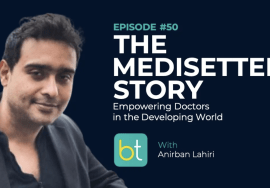
ARTICLE: WHAT THE PHARMA INDUSTRY CAN LEARN FROM FMCG COMPANIES
There is an interesting similarity between pharmaceutical companies and life insurance firms. Both industries are steeped in conservatism and characterized by a certain degree of inertia born out of a pervasive and enduring culture of risk aversion; insurance companies because they are in the business of risk management and pharma companies because they play in a heavily regulated industry in which the stakes are very high.
Yet, both pharmaceutical companies and life insurance companies have realized, rather belatedly, that the very same corporate cultures that helped them in their core activities of drug development and policy underwriting and claims administration, respectively, have become major hindrances to their commercial success. Why? Because, ultimately, both industries are, ultimately, customer-facing in nature. Life insurance policies are typically sold to individuals, not enterprises. The commercial success of drug companies is ultimately dependent on the decisions of individuals, be it medical practitioners / care-givers or the patients, themselves. So why does a conservative corporate culture come in the way of commercial success of a consumer-facing business? Because the consumer has evolved dramatically over the last two decades. The revolution in personal computing, the ubiquity of the internet and, with it, social media have necessitated a paradigm shift in how companies market themselves to consumers.
Gone are the days of big ticket advertising such as commercials, billboards and big flashy physical events. The modern consumer is more glued to his smartphone screen than to an advertising hoarding on a busy highway. The modern consumer considers TV commercials to be disruptive and irritating and is used to the notion that content is free for all and, hence, the privilege of consuming it should not have to be traded-off against the quality of the experience of consuming the content. Equally obsolete are grassroots sales and marketing tactics such as visits by door-to-door salesmen or cold calls by telemarketers, both of which are considered intrusive in nature. Consumer goods companies have been quick to adapt to this new reality. Even the stodgiest of names in the consumer world with centuries-old legacies — the likes of P&G, Unilever, Coca Cola — have rapidly shifted away from traditional advertising and marketing channels to embrace the digital evolution. There are 4 notable realizations that have shaped their new marketing approach as shown below:
1) Consumers want to be reached on their terms: The advent of the internet and social media revolution has led to a fragmentation of consumer mind-share and attention. In the pre-internet age, eyeballs were distributed across just a small handful of spaces: print media, television and outdoor advertising billboards. Drivers stuck in traffic didn’t have smartphones to seek refuge in; they could only tune into their favorite radio channel and check out big advertising hoardings lining the road to alleviate their boredom. Families at home after dinner typically gathered around the television screen, one of the very few avenues for in-home entertainment. No video call technology at the time meant that face-to-face meetings were the only avenue for high quality, personalized interaction; hence physical sales calls were entertained, even if somewhat grudgingly not least because the sales representatives were the only channel for consumers to receive new product information and ask questions given that you could not simply get online and run a Google search or browse product information on an e-commerce site. Telemarketers, no matter how irritating, were accommodated for the same reasons and also because, before the advent of the mobile phone, people could only be reached on fixed landlines during very specific times of the day rather than being interrupted in the middle of their workday or while watching a football game in a stadium with rapt attention.
The internet revolution, smart phones and social media have led to a proliferation of new channels across which eyeballs are now distributed. Consumers now have a plethora of online “spaces” that they can frequent for the news, information and experiences that they desire most. The ubiquity of access created by the mobile phone has meant that consumers are much more sensitive about their “personal space” and do not therefore like cold sales calls. The fact that video calls and chat tools are so easily accessible — and largely free — these days means that consumers neither want nor expect salesmen to show up at their doors, unsolicited.
Most consumer companies have adapted to these realities by shifting their ad spending from offline channels to a range of digital channels to cater to the unique behavioral attributes and needs of different segments of consumers.
2) Consumers expect conversations, not one-way messaging: The internet and personal computing revolution have also allowed all of us to reconnect with that most basic of evolutionary instincts in human beings — the need for conversation and dialogue. As social beings who, not very long ago in our evolutionary history, used to gather around campfires every night and converse with each other, uni-directional interaction is somewhat unnatural. Yet, uni-directional messaging is what brands and companies had to resort to prior to the internet age when it came to cost-effective mass advertising — huge billboards and prime-time TV commercials were the only real options.
Consumer companies, by and large, have embraced this by relying on interactive, two-way marketing. Social media has become an integral part of their marketing campaigns and there are armies of people behind the Facebook and Instagram pages of various brands that are paid to do one thing and one thing only: respond to comments, answer questions and encourage conversations with existing and prospective consumers.
3) Authenticity and relatability are key: In the age of big-ticket, mass advertising hiring celebrities and societal role models was the name of the game. This is partly because publicly-displayed advertising needs to be catchy and attention-grabbing to really be impactful. Unlike when you look at a display ad on a smartphone screen at close quarters, you are more likely to notice a billboard ad at a distance while driving if your favorite movie star is staring at you from the hoarding. While watching TV, you are more likely to not take that bathroom break or explore your kitchen larder during a commercial if that commercial features your favorite star or public figure. With the internet, this calculus has fundamentally changed. You browse content at close quarters and you can tap on an advertisement or preview to read a full write-up or article to learn more about something that has piqued your interest. The fact that you can play a Youtube video of your favorite celebrity or watch a movie featuring this person on-demand as many times as you like, means that pictures of that celebrity on an ad or billboard are not that eye-catching anymore. The fact that you can “deep-dive” into a company, service or product at will means that you no longer rely on celebrity endorsement as a form of “social proof” of the veracity of product claims or company values.
More importantly, the ubiquity of forums and social networks has meant that there are endless possibilities for interaction between consumers and a plethora of consumer-generated content. Hence, why not heard from “the horse’s mouth” about their experience with a product or service rather than have a paid celebrity force feed you a statement that they are paid millions of dollars to make? Also, the mushrooming of an industry of paid KOLs and social influencers over the years has started to backfire because consumers have realized the agency conflicts inherent in this practice. Why rely on paid influencers when you can hear directly from ordinary “mortals” and peers who have experienced the product or service from the perspective of a regular consumer?
Once again, consumer companies have been smart to pick up on these trends. Gone are the days of multi-million dollar TVCs and billboard ads featuring super stars. Award-winning commercials these days are the ones that feature ordinary people, the “neighbor-next-door” types that live lives just like most of us do — the “Mr. Kim” in Korea, the “Mrs. Watanabe” in Japan, the “Mr. Kumar” in India, the “Mr. Nguyen” in Vietnam or “Joe Smith” in the United States. Precisely because they are relatable. More ad spending has gone into seeding forums, where brands facilitate conversations between consumers and shape consumer perception through the right content interventions rather than relying on paid influencers or Key Opinion Leaders (KOLs).

So what does all this mean for Pharmaceutical Companies?
A bit of introspection by pharmaceutical marketeers will reveal strong parallels between their current practices and the consumer marketing practices of yesteryear. Here are some key takeaways:
1) Embrace digital and multi-channel: Just like their consumer industry counterparts, pharmaceutical companies have to turbocharge their transition into digital mediums for engaging physicians and patients alike. While this has started to happen in the past decade, adoption of digital engagement, e-detailing and other practices has happened in fits and starts and as isolated experiments rather than as part of a deliberate, carefully planned strategic initiative. Pharma companies should make digital a core part of their commercialization and brand management programs and look at e-detailing and online education as an essential complement to medical rep visits and offline conferences and seminars. Furthermore, the fragmented nature of digital media and platforms mean that using a single portal, smart phone application or digital medium are sub-optimal. Doctors, just like regular consumers, need to be reached where they find it most convenient and not where the pharmaceutical companies wish to drive them to. Effective digital advertisers can be best characterized as giant octopuses: they have their tentacles in multiple places to catch the attention of the audience wherever possible.
2) Focus on dynamic, networked digital environments: Where pharmaceutical companies have started transitioning to digital, they have mostly done so with outdated uni-directional mediums such as email campaigns and drug information and medical education portals that deliver content to doctors and patients. This format has outlived its utility. Just like consumers want conversations with brands and with each other, so too do doctors and patients. After all, doctors are human beings and live consumer lives just like the rest of us. They use social media, they buy products on e-commerce sites and book holidays on internet travel portals. Hence, doctors also expect similar experiences when it comes to their professional lives. They want to share information, converse with other doctors and also with pharmaceutical companies. Pharmaceutical companies need to look more seriously at interactive, networked mediums for doctor education, a.k.a doctor social networks.
“Researchers at Yale School of Medicine and Johns Hopkins School of Medicine conducted a five-year longitudinal study of surgeons who were treating women with breast cancer….using Medicare data, researchers found that when ‘early adopter’ doctors began using somewhat controversial MRI and PET scans, peer physicians were twice as likely to begin using the test, too” – Kevin Kruse, “Great Leaders Have No Rules”, 2019
3) Don’t obsess over KOLs: Pharmaceutical marketeers and brand managers have long focused on KOL doctors that command huge respect among their peers and have authority in the medical field. But for the same reasons that celebrity endorsements in the consumer industry have become obsolete, KOL-centric marketing to doctors is becoming outdated. Doctors increasingly realize that KOLs are compensated handsomely to advocate drugs and devices and, often, this comes at the cost of their professional integrity. The over-reliance on KOLs and the huge marketing dollars that have flowed to them has ended up backfiring in terms of perception.
Doctors today, especially those in the younger generation, expect more authenticity in messaging by pharmaceutical companies. They would rather hear from peers and counterparts who have used a drug or device rather than just rely on what they hear from KOLs. KOLs still matter, of course, and giants in their respective fields will always hold sway but they are no longer looked up to as “gods” by their junior and less-established counterparts when it comes to “proof of product”. Pharmaceutical companies should therefore look to authentically identify and cultivate brand and product advocates and use networked environments to empower them to organically influence their peers.
Overall, the insurance industry seems to have learnt lessons from the consumer industry by embracing online channels to both distribute their product and also to provide support to their customers. The pharmaceutical industry would be well served to take a cue from the insurance industry and embrace the digital and social media era more sincerely and more holistically. Tinkering at the margins is no longer likely to work when it comes to digital strategies.
– Anirban Lahiri, Founder and CEO, Medisetter
About the Author:
Anirban Lahiri is the Founder and CEO of Medisetter Doctor Network.
Medisetter Doctor Network is a builder of clinician networks which focuses on upskilling medical doctors and students in developing countries through a networked and interactive learning environment. An estimated 25% of all medical doctors in Vietnam are a part of the company’s digital ecosystem.
The Medisetter ecosystem offers medical doctors a one-stop-shop destination to share clinical cases and information, participate in seminars and workshops, stay abreast of the latest medical news, discoveries and drug updates and build their professional brands.
Medisetter provides digital doctor engagement, scientific-detailing, brand-building and market research solutions to pharmaceutical, and medical device companies.




